Birds are a beloved part of the Magdalena landscape. From the brightly colored parrots of the Amazon to the majestic Andean Condors, the region is home to an incredible variety of bird species. With its diverse habitats, Magdalena is a paradise for birdwatchers.
Whether you’re looking for rare and unusual species or simply enjoying the beauty of everyday birds, the region has much to offer. Whether you’re a seasoned birder or just getting started, you can be sure to find something to delight you in the skies of Magdalena.
1. Osprey
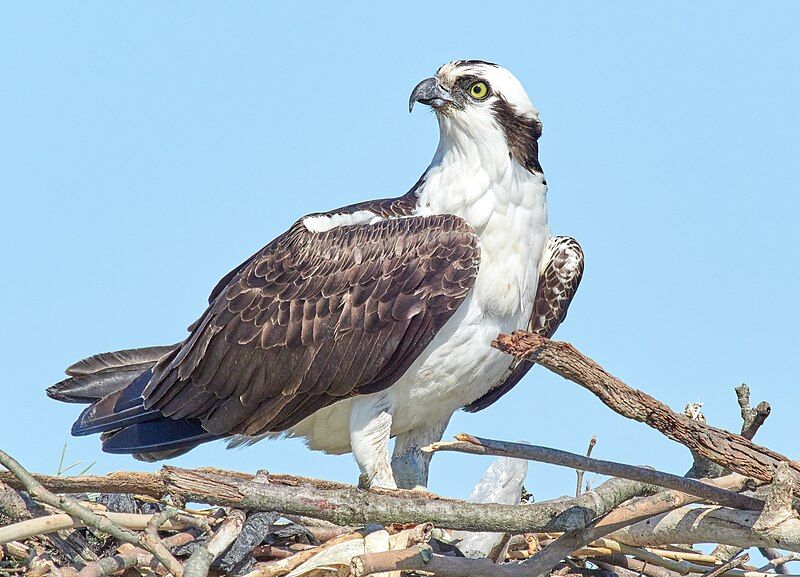
The Osprey is a powerful and impressive bird of prey. It is a large raptor, typically reaching over 60 cm in length and 180 cm across the wings.
With a cosmopolitan range, the osprey, also known as the sea hawk, river hawk, and fish hawk, can be found in many parts of the world.
It is known as a diurnal bird, meaning it is active during the day and sleeps at night. The osprey has a distinct color pattern, with brown upperparts and greyish head and underparts.
This coloration helps it to blend in with its surroundings, allowing it to hunt fish more effectively. The Osprey is an amazing bird to observe in its natural habitat, as it is an expert at hunting and capturing fish from the air.
| Kingdom | Animalia |
| Phylum | Chordata |
| Class | Aves |
| Order | Accipitriformes |
| Family | Pandionidae |
| Genus | Pandion |
| Species | P. haliaetus |
2. White-mantled Barbet
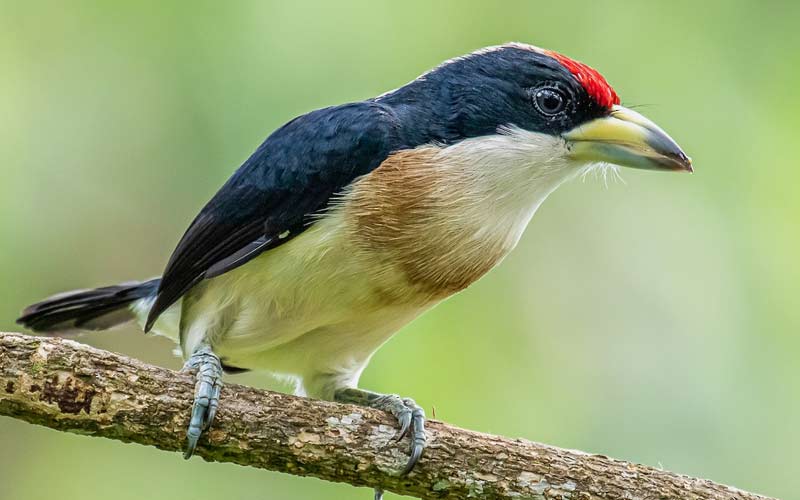
The white-mantled barbet is a species of bird that belongs to the Capitonidae family. It is only found in Colombia, where it inhabits tropical moist montane forests, pasturelands, and plantations.
Unfortunately, its population is in decline due to the destruction of its natural habitats. This is caused by the conversion of the land into agricultural fields and other human activities such as logging, mining, and the development of roads and infrastructure.
The loss of its habitats not only affects the barbet’s ability to survive but also puts it in danger of extinction shortly. The white-mantled barbet is a medium-sized bird with striking black-and-white plumage.
It has a distinctive white colored cap on its head that contrasts with the dark gray color of its body. Its diet consists of insects, small fruits, nectar, and other plant matter.
It is a vocal species and is known to make multiple types of calls, including loud whistles and coos, to attract mates and defend its territory. Despite its unique beauty and its important role in the Colombian ecosystem, the white-mantled barbet is facing several threats.
The destruction of its natural habitats is the biggest threat to its survival, as it reduces the available food sources and nesting sites. In addition, the barbet is also threatened by hunting and the illegal pet trade.
It is estimated that the population of the white-mantled barbet has decreased by more than 50 percent over the past two decades. If immediate steps are not taken to protect the white-mantled barbet, it is likely to be at risk of extinction shortly.
Conservation efforts such as habitat protection, law enforcement, and education are essential for the species’ long-term survival. By raising awareness of the barbet’s plight, we can help ensure that this beautiful bird remains part of Colombia’s unique avian biodiversity.
| Kingdom | Animalia |
| Phylum | Chordata |
| Class | Aves |
| Order | Piciformes |
| Family | Capitonidae |
| Genus | Capito |
| Species | C. hypoleucus |
3. Beautiful Woodpecker
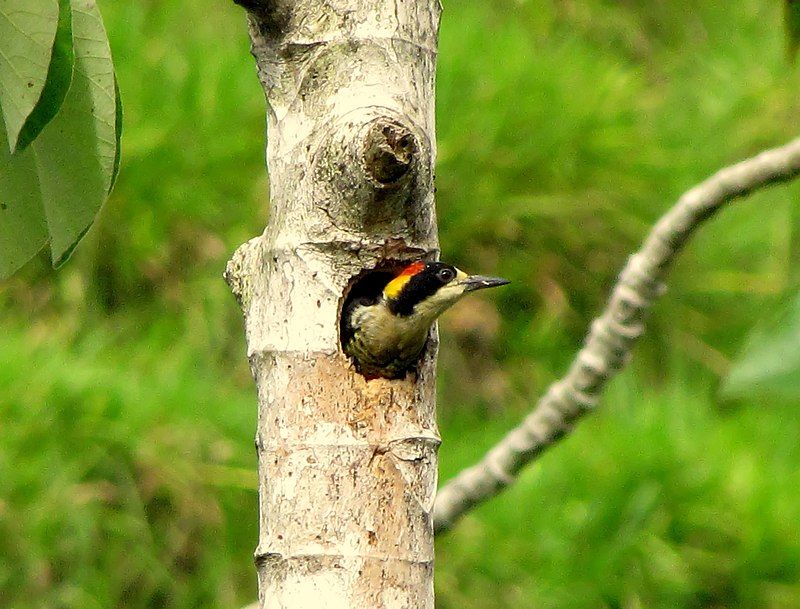
The woodpecker is a species of bird belonging to the family Picidae and the subfamily Picinae. It is unique to Colombia, meaning it cannot be found in any other country. This species of woodpecker is known for its beautiful features, making it an attractive bird to observe.
The plumage of the woodpecker is usually a combination of black and white, with red or yellow feathers on its head. It also has a distinct long, pointed beak and a sturdy body, which help it climb trees and feed on insects and other small creatures.
The woodpecker is also an important part of Colombian ecology, as its presence helps to control insect populations and disperse seeds from trees.
Additionally, the woodpecker’s song is a familiar sound in the forests of Colombia, adding a melodious note to the Colombian environment.
| Kingdom | Animalia |
| Phylum | Chordata |
| Class | Aves |
| Order | Piciformes |
| Family | Picidae |
| Genus | Melanerpes |
| Species | M. pulcher |
4. Black-crowned Night Heron
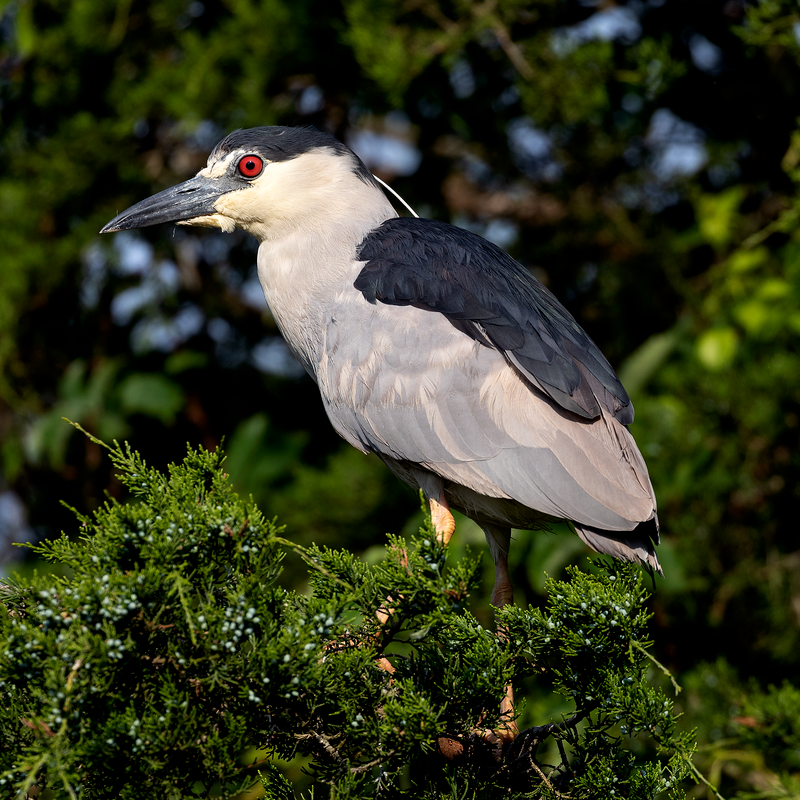
The black-crowned night heron, also known as the black-capped night heron, is a species of heron that is found throughout a wide range of geographical locations. It is a medium-sized bird that has a wingspan of approximately one meter.
The heron is native to parts of Europe, Asia, North America, and South America. It is sometimes referred to simply as the night heron in Eurasia. The black-crowned night heron has a distinctive black crown on its head, with a white or grey face and black beak.
Its upper parts are grey and its underparts are white. In terms of its diet, the bird mainly feeds on small fish, frogs, and other aquatic creatures.
It typically hunts by standing in a shallow body of water and waiting for its prey to come within reach. The night-heron is a solitary bird and it usually nests in trees near bodies of water. It typically lays two to four eggs and the young are cared for by both parents.
The incubation period lasts between twenty-two and twenty-four days. The night-heron is generally a shy bird and it is rarely seen out in the open. It is more often spotted in the evening or at night when it is actively hunting for food.
Overall, the black-crowned night heron is an interesting species of bird that is found across a wide range of habitats. It is an important part of many freshwater ecosystems and it helps to keep the population of small fish and other aquatic creatures in check.
| Kingdom | Animalia |
| Phylum | Chordata |
| Class | Aves |
| Order | Pelecaniformes |
| Family | Ardeidae |
| Genus | Nycticorax |
| Species | N. nycticorax |
5. White-tipped Dove
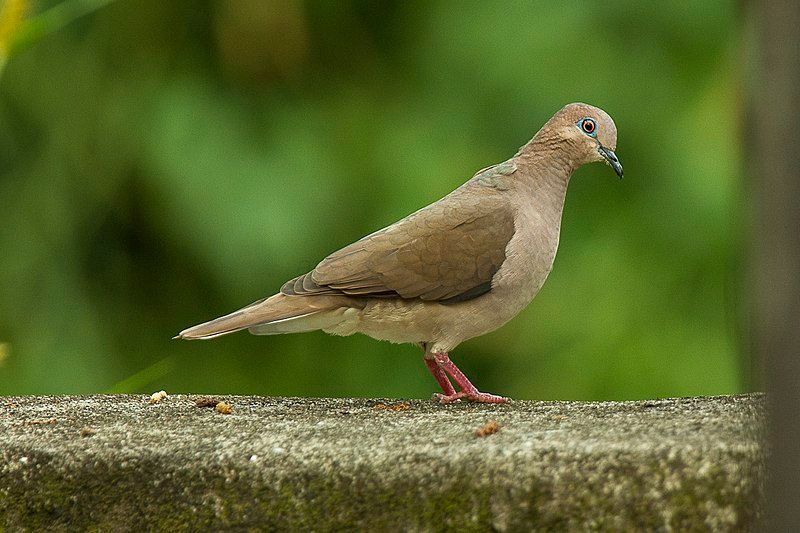
The white-tipped dove is a large species of dove that is found in the tropical regions of the Americas. It has distinctive white tips on its tail feathers, which give it its common name.
The scientific name of this species, Zenaida asiatica, was chosen to honor two famous French naturalists, Jules, and Edouard Verreaux. The Verreaux brothers were renowned ornithologists who made major contributions to the study of birds.
They conducted several important expeditions to Africa and the Americas in the 1800s, during which they documented many species of birds.
The genus name Zenaida is derived from the name of the mythical Greek goddess, Zenaida, while the species name Asiatica is derived from the Greek word for “eastern”, referring to the eastern origins of the white-tipped dove.
Thus, through the scientific name of the white-tipped dove, the Verreaux brothers have been immortalized for their contributions to ornithology.
| Kingdom | Animalia |
| Phylum | Chordata |
| Class | Aves |
| Order | Columbiformes |
| Family | Columbidae |
| Genus | Leptotila |
| Species | L. verreauxi |
6. Green Heron
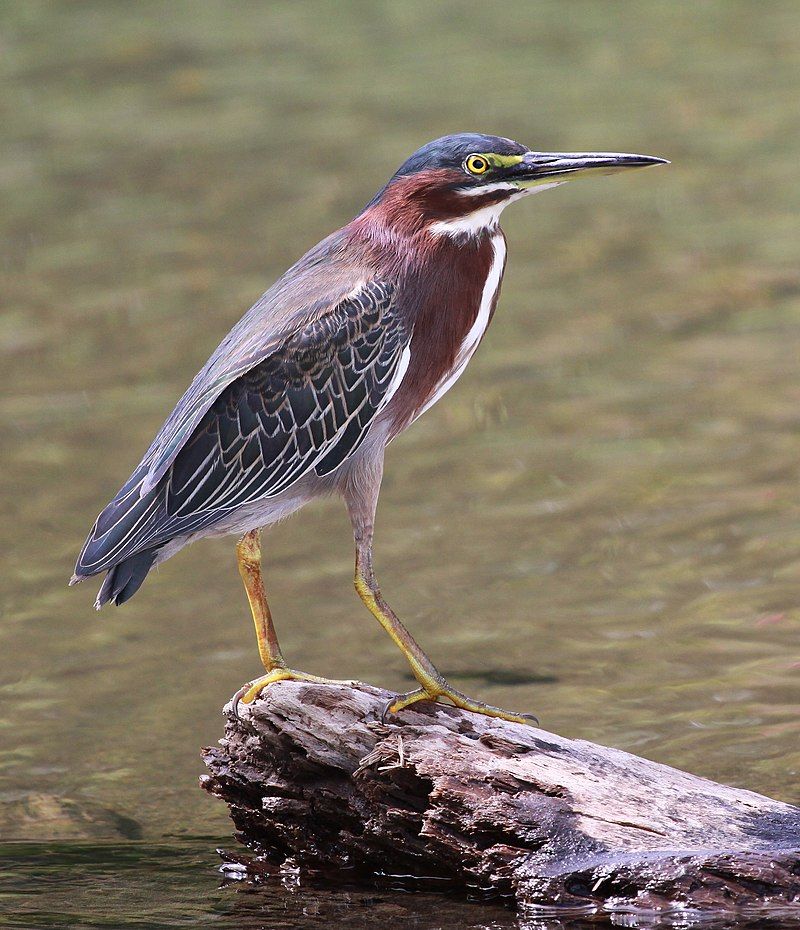
The green heron is a small heron native to North and Central America. Its scientific name, Butorides virescens, is derived from two sources.
The first part of its name, Butorides, is taken from Middle English butor, which means “bittern” and Ancient Greek -oides, which means “resembling”. The second part of its name, virescens, is derived from the Latin word for “greenish”.
This bird is characterized by its small size and its greenish feathers, giving it its common name of green heron. The green heron is a wading bird of the heron family and is typically found near ponds, lakes, and marshes. It feeds on small fish, frogs, crayfish, and insects.
It can be found in open wetlands, wooded swamps, and even urban areas. The green heron has a long neck, short legs, and a black bill. Its wings are mainly gray on the upper side and white on the underside.
In flight, the green heron can be seen with its neck tucked, its wings spread, and its legs dangling beneath its body. The green heron is a solitary bird and is most active in the early morning and late evening.
During the day, it can usually be found perched on branches near water, or standing motionless as it scans for prey. The green heron is capable of catching food with its bill or feet, and it can dive into the water to catch its prey.
It is also known for its ability to capture food with a bait-and-lure technique. The green heron is a beautiful bird and can be a fun addition to any backyard or nature preserve.
Its unique behavior and ability to adapt to its environment make it an interesting species to observe and learn about.
| Kingdom | Animalia |
| Phylum | Chordata |
| Class | Aves |
| Order | Pelecaniformes |
| Family | Ardeidae |
| Genus | Butorides |
| Species | B. virescens |
7. Apical Flycatcher
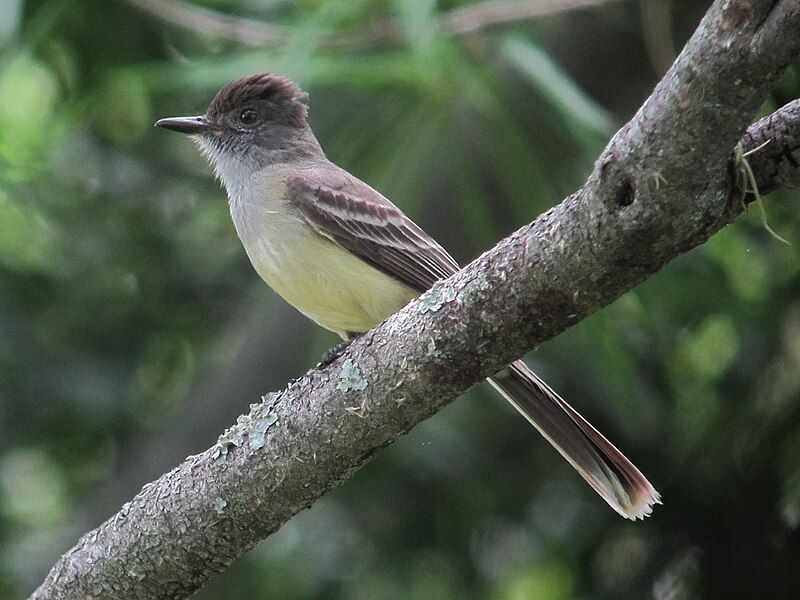
The Apical Flycatcher is a species of bird belonging to the family Tyrannidae. It is only found in Colombia and inhabits both subtropical or tropical dry forests and arid and semi-arid open areas.
This bird is well-adapted to living in these environments, with certain features that help them to survive and thrive.
For example, they have a short, stubby bill, which is ideal for catching insects in dry habitats, and a long tail that helps them to maneuver through thick foliage. They also have strong legs and feet, which allow them to move around quickly and easily.
Furthermore, they have excellent eyesight and hearing, which enables them to locate prey. As a result, they can feed on a wide variety of insects, making them an important part of the food chain in these environments.
| Kingdom | Animalia |
| Phylum | Chordata |
| Class | Aves |
| Order | Passeriformes |
| Family | Tyrannidae |
| Genus | Myiarchus |
| Species | M. apicalis |
8. Thamnophilidae
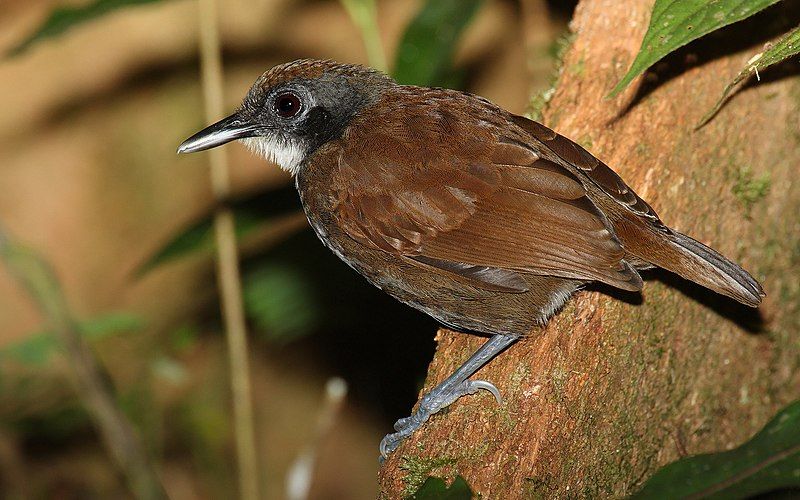
The antbirds are a type of passerine bird, which is a type of songbird. They are found in Central and South America, from Mexico to Argentina, and make up a large family of birds known as the Thamnophilidae.
There are over 230 species of antbirds, which are given different names based on their characteristics. These names include antshrikes, answers, antvireos, fire-eyes, bare-eyes, and bush birds.
Antshrikes are known for their strong bills that they use to catch insects, while antwrens are small, active birds that often live in dense undergrowth.
Antvireos are brightly colored birds that make complex calls, and fire-eyes are named for the bright red patch around their eyes. Bare-eyes are small, inconspicuous birds, and bush birds are large, dark, and heavily streaked antbirds.
All of these different types of antbirds live in the same area but vary in color, habits, and other physical characteristics.
| Kingdom | Animalia |
| Phylum | Chordata |
| Class | Aves |
| Order | Passeriformes |
| Family | Thamnophilidae |
9. Northern Screamer
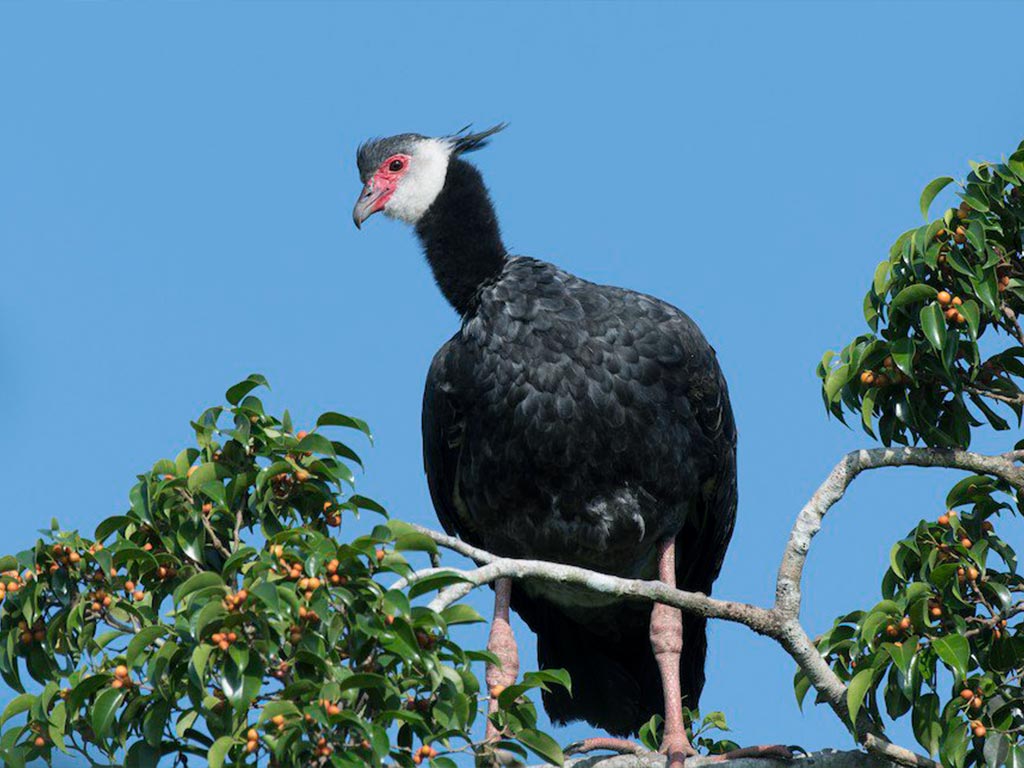
The northern screamer is a species of bird that is classified as Near Threatened, according to the International Union for Conservation of Nature (IUCN). It belongs to the family Anhimidae and the order Anseriformes, which are both groups of waterfowl.
This species is mainly found in two countries, Colombia and Venezuela. The northern screamer is a medium-sized bird, with an overall grey color and a white head. It has a large bill, a long tail, and long legs.
Its diet consists mainly of aquatic vegetation, insects, and small reptiles, which it hunts in shallow waters. This species is known for its loud, shrill call, which can be heard from a distance.
The northern screamer is usually found in isolated wetlands, swamps, and marshes, where it can find a wide range of food sources. It is also a gregarious species, meaning that it prefers to live in groups and is less likely to be found alone.
Unfortunately, this species is facing several threats, which include habitat loss, hunting, and pollution. As a result, its population is decreasing and it is now classified as Near Threatened.
Therefore, we must take action to protect the northern screamer and its habitat. This includes implementing conservation measures, such as protecting its wetland habitats, and ensuring that hunting is regulated and kept to a minimum.
By doing so, we can help to ensure that this species can survive and thrive for many years to come.
| Kingdom | Animalia |
| Phylum | Chordata |
| Class | Aves |
| Order | Anseriformes |
| Family | Anhimidae |
| Genus | Chauna |
| Species | C. chavaria |
Conclusion
Birds are an integral part of the Magdalena ecosystem, providing food for other animals and pollinating flowers.
They also provide an important source of tourism for the region, as birdwatchers from around the world flock to Magdalena to observe its diverse avian population.
As the region continues to face challenges, such as deforestation and climate change, the protection and conservation of birds must be prioritized to ensure the health of the environment.